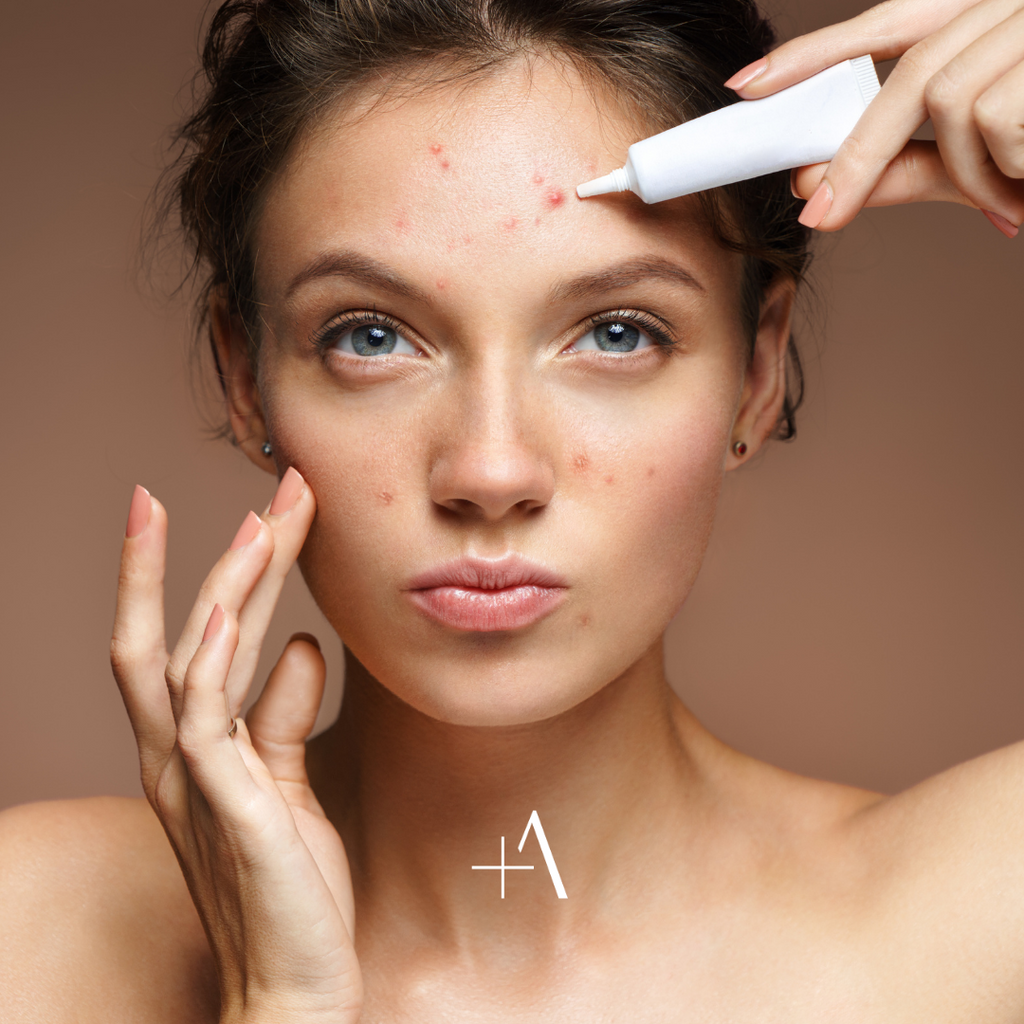Acne; FACT vs FICTION

Acne fact versus fiction
It’s a massive misconception that once we survive those teenage years of our lives, our days of battling acne are over once and for all. If only it was that easy! 85% of Australians will experience some level of acne in their lifetime and unfortunately, some cases are trickier to treat than others.
Acne occurs when our hair follicle and sebaceous gland become blocked and inflamed. This environment creates the perfect opportunity for bacteria to form and develop, causing the skin to become irritated, red, and sometimes painful.
For many, treating acne needs to go further than simply applying aesthetics skin care products and watching their breakouts disappear. More often than not, the treatment of acne needs to be a holistic one that nurtures both our internal and external health.
With so many misconceptions about acne circulating our online feeds, we thought this was the perfect opportunity to separate acne fact from fiction so you can get to understand this complex skin condition even better.
“There’s only one kind of acne”
Fiction. Acne can present in different ways and severities that are generally categorised as inflamed or non-inflamed acne. Non-inflamed acne, such as whiteheads and blackheads, are the result of a blocked oil gland and if left untreated, will progress into inflamed acne.
Inflamed acne is what many of us would visualise when the word ‘acne’ is mentioned. Cysts, nodules, papules, and pustules are your red and painful looking forms of acne that are the result of an overgrowth in p-acne bacteria that has caused the inflammation.
“Acne is caused by eating too much junk food”
Also, fiction! Whilst some foods, such as dairy, whey protein and a high glycaemic index diet, have been linked to the progression of acne, diet is just one of factors that need to be considered when diagnosing and treating acne.
Other contributors to acne include the products and skincare routine (or lack thereof) an individual is using each day and most notably their stress levels and hormone function.
High levels of androgens cause oil production to increase in the skin which can lead to an increase in acne appearing on the skin. Therefore, acne is common during puberty and with those experiencing hormonal imbalances such as those with PCOS. Additionally, an increase in cortisol can also aggravate acne causing functions within the skin which is brought on via periods of stress or anxiety.
“Oily skin needs hydration”
Fact! Those experiencing acne or oily skin generally steer away from the use of moisturisers as they’ve been told this will exacerbate their condition when, a dose of hydration could be exactly what their skin is craving.
Oily skin is a common sign of dehydration in the skin which sees the skin over-produce oil to compensate for the lack of moisture. When you combine the commonly used skin stripping products, fear of moisturiser and environmental conditions, oily skin has more factors working against it than with it!
The key is to find products that don’t feel heavy or overbearing on the skin but work hard to replenish the water loss that the skin is experience. When we bring the skin back to optimal levels of hydration, we’re able to welcome much needed balance and ultimately, slow down the oil production to a more manageable state.
“Exfoliating scrubs will help clear my breakouts”
This is a big dose of fiction! We’re putting harsh exfoliating scrubs in the same category as toothpaste when it comes to acne cures that are totally false.
Physical exfoliants often only work on the surface of the skin so they’re unable to penetrate the skin and effectively treat acne at the root of the condition. Scrubs are also too aggressive for many blemished skins as their barrier is already compromised and inflamed therefore, this approach to exfoliation could be worsening the condition.
Instead, we suggest approaching exfoliation through chemical alternatives, especially, ones containing salicylic acid. Salicylic acid is a beta hydroxy acid (BHA) that works by penetrating the skin to breakdown build-up, such as oil and gunk, found beyond the pore. Yes, it goes beyond the skin’s surface to tackle your acne where it’s occurring!
Whilst it’s giving your skin a serious spring cleaning, it’s also offering an exceptional exfoliation and working to ease inflammation in the areas of concern. When used as part of your regular exfoliation routine, salicylic acid helps to welcome a more controlled oil flow and ultimately help to slow down the production of acne. Talk about multitasker!
“Only people will severe acne need to get professional help”
Fiction, fiction, fiction! Like any skin concern, if you feel like you can’t get on top of it, it’s time to seek professional help. When it comes to acne, many at-home remedies and self-diagnosis strategies can make the condition worse so if it’s feeling out of control, it’s best to consult a skin professional.
From non-invasive treatment to working with aesthetics skin care products, we pair our incredible expertise with the industry’s best in technology and skincare to craft a skin-clearing treatment plan that works best for you.
The easiest way to take control of your acne is by booking a +Aesthetics skin consultation so we can take a closer look at your acne and understand the best products and treatments for you.
